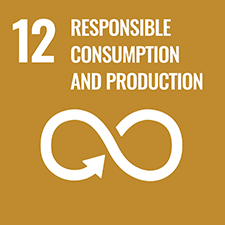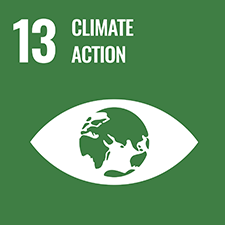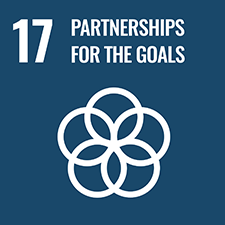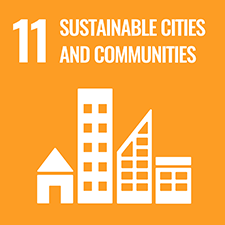
Globalization and the world monetary system: The erosion of the dollar and the scenario for Vietnamese trade
18 Jul, 2022
The US-China trade war, the COVID-19 pandemic and the current Russia-Ukraine conflict have led to a new consensus from developed economies that it is necessary to reduce interdependence… However, this process of reducing interdependence has led the world to rising inflation, labor shortages, rising protectionism, shocks to the global financial system, etc. change the international monetary system? The following article has analyzed the globalization trend in the new context and its impacts on the world monetary system, thereby, recommending a trade scenario for Vietnam.

The trend of globalization in the new context
Since ancient times, people have sought out remote places to settle, produce, and exchange goods thanks to improvements in technology and transportation. It was not until the 19th century that global integration developed. After centuries of European colonization and commerce, that first ‘wave’ of globalization was fueled by the advent of steamships, railroads, telegraphs, and many other breakthroughs and also through methods of increasing economic cooperation between countries. However, that trend of globalization eventually waned and collapsed during World War I, followed by postwar protectionism, the Great Depression, and World War II. After World War II in the mid-1940s, the United States led efforts to restore international trade and investment under negotiated ground rules. Western elites have come to believe that trade is conducive to peace and vice versa. Cordell Hull, Franklin Roosevelt’s Secretary of State, firmly believed that lowering tariffs and increasing international trade would help lay the groundwork for peace. The EU is also an economic and political project. Its roots lie in the European Coal and Steel Community, founded in 1952 with the goal of making French and German industry so interdependent that another European war could never happen. From the 1960s, Germany implemented a Look East policy by normalizing economic relations, and then Russian gas began to flow to Germany in 1973...
As a result, the process of globalization has promoted certain economic growth and progress. Table 1 shows that the globalization trend has promoted the growth and economic openness of the G7 countries in the leading role of the globalization process. In fact, this globalization has been on the decline since the 2007-2008 global financial crisis. Trade share of the world GDP began to decline after 2007, as Chinese export-to-GDP ratio plummeted by 16 percentage points. In 2007, Chinese export-to-GDP ratio was 35.43% and has decreased to 18.5% by 2020. Global value chains have stopped expanding and are currently moving among countries.
Table 1: Trade Openness and GDP of G7 Countries (Exports plus Imports/GDP)
|
Nation |
Export (trillion USD) |
Trade openness |
Economic growth (trillion USD) |
|||||
|
1990 |
2020 |
% |
1990 |
2020 |
1990 |
2020 |
% |
|
|
Canada |
149,46 |
476,04 |
219% |
50,18 |
59,91 |
593,93 |
1.645,42 |
177% |
|
UK |
252,31 |
770,48 |
205% |
47,98 |
55,64 |
1.093,17 |
2.759,8 |
152% |
|
German |
404,58 |
1.669,99 |
313% |
45,86 |
81,11 |
1.771,67 |
3.846,41 |
117% |
|
France |
266,22 |
733,17 |
175% |
42,74 |
57,77 |
1.269,18 |
2.630,32 |
107% |
|
Italia |
215,68 |
555,04 |
157% |
36,32 |
55,09 |
1.181,22 |
1.888,71 |
60% |
|
USA |
551,87 |
2123,41 |
285% |
19,82 |
23,38 |
5.963,14 |
20.953,03 |
251% |
|
Japan |
320,17 |
785,37 |
145% |
19,66 |
31,38 |
3.132,82 |
5.057,76 |
61% |
Source: The World Bank
On the other hand, is the era of globalization over when the world faces the Covid-19 epidemic, the war between Russia and Ukraine? Today, global trade is relegated to second place and promotes national goals to the top – especially public health and national security. The goal of globalization is to realize a principle of comparative advantage of a country to specialize in the production process; however, the development of globalization creates another principle to promote economic growth. economy by promoting an economy that produces what richer nations need. The result is a conflict between the policy of intervention, promoting successful economic growth and the principles of international trade (Dani Rodrik, 2017). Today, with the rise of China as a geopolitical rival and the Russia-Ukraine conflict, American strategic competition in the choice of national security over the interests of international economic cooperation. This puts global trade under two scenarios: (1) the worst and less desirable scenario of the 1930s when a country/group of countries withdrew from the production process; (2) a less dire scenario where geopolitical supremacy is maintained, i.e. trade wars, economic sanctions will become a prominent feature in global trade and finance.
World monetary system
Globalization has fundamentally reshaped the way advanced country economies (including the euro area and the United States). The remaining countries are major destinations for the production and design of goods and services, providing a diverse selection of imported goods for domestic producers and consumers. At the same time, the financial systems of advanced economies have been transformed through global financial flows. Meanwhile, a fundamental change in global economic growth has emerged from the increasing contribution of emerging and developing economies (Figure 1). This means that their contribution to global trade has also increased (Figure 2).
Figure 1: Contributions towards the global economic growth

Source: IMF World Development Indicators and Haver Analytics
Figure 2: Proportion of exported goods in USD

Source: IMF World Development Indicators, IMF World Economic Outlook and Haver Analytics
The expansion of international trade has been accompanied by an increase in wealth expansion outside of global GDP (Figure 3), which demonstrates the interest of advanced economies in promoting global trade. demand to expand the money supply (Table 2, Figure 4). Thereby, the increase in international trade and investment has led to concentration in certain currencies. The US dollar has been playing the leading role, the Euro is second (Figure 5). It is also the main reason that the US and Western countries use this dominance to impose sanctions. The increasing degree of imposing sanctions through this monetary payment system has prompted countries around the world to set up different payment systems to circumvent these sanctions. Some countries make bilateral payments using each other’s currencies or set up some payment systems to replace the SWIFT system listed as China's CIPS system, etc.
Figure 3: External wealth development in the global economic growth

Source: External Wealth of Nations database (Lane and Milesi-Ferretti) and ECB staff calculations
Figure 4: M0 monetary circle of some countries

Source: Trading Economics
Figure 5: International monetary system

Source: BIS, CLS Bank International, IMF, SWIFT and ECB calculations. See also ECB (2019)
Table 2: Economic growth and M2 monetary circle development of the G7 nations
|
Nation |
M2: Q1 1999/Q4 2021 |
GDP: Q1 1999/Q4 2021 |
|
Canada |
406% |
152% |
|
UK |
373% |
133% |
|
German |
189% |
80% |
|
France |
335% |
85% |
|
Italia |
250% |
56% |
|
USA |
382% |
155% |
|
Japan |
33% |
2% |
Source: Thomson reuters datastream
Therefore, the challenges to the current monetary system still exist and are increasing as sanctions are continuously imposed from developed countries. The point is whether these challenges are big enough for the US dollar-based monetary system to lose its role.
The erosion of the dollar!
The current world is undergoing a huge number of rapid changes from the leading role in globalization of developed economies, the rise of China, the intensity of sanctions imposed in the current monetary system and so on will the confidence of countries participating in global trade and investment decline in the current dollar-based monetary system?
In accordance with Paul Krugman’s point of view, the monetary system used by countries participating in international trade needs to be approached on two aspects: size and thickness of the market (Paul Krugman, 1980). As the monetary system became weaponized prior to the Russia-Ukraine conflict, China and Saudi Arabia are becoming wary of participating in the SWIFT system. Zhou Xiaochuan (former governor of the People's Bank of China) talked about the risk of China and called for increased use of the renminbi globally through the CIPS system; however, the result was that the transaction value was only 1% against SWIFT.
A currency system of choice for international payments requires meeting the high funding needs in times of crisis for international financial institutions. The US Federal Reserve has launched two response programs to the stress of shortfall in payment currencies, the 2008-2009 crisis and the March 2020 Covid-19 crisis (Carol Bertaut, Bastian von Beschwitz, Stephanie Curcuru, 2021). The value of these transaction flows is huge, worth $585 billion during the 2008-2009 crisis and $450 billion during the Covid-19 period. Meanwhile, the Euro is also widely used in international payments, but is not widely used to swap with currencies other than the US dollar. Thus, the use of the dollar as a ‘means’ rather than in the role of direct payments between countries as China calls for.
Figure 6: Monetary loop through Fed Banking system

Source: Federal Reserve Bank of New York; European Central Bank
Gita Gopinath and Jeremy Stein, described another feedback loop related to valuation (Gita Gopinath and Jeremy Stein, 2021). Since many commodities are priced in US dollars, US dollar assets have relatively predictable purchasing power; this underpins demand for these assets, making it somewhat cheaper to borrow in dollars compared to other currencies. Borrowing in cheap US dollars in turn gives businesses an incentive to limit their exposure to debt risk through pricing their products in US dollars, once again reinforcing the US dollar’s advantage.
The third important issue regarding the choice of currency for international payments is to what extent the debt market for that currency has developed. When the Euro was born, it created conditions for the development of a debt market to compete with the US; nevertheless, after the debt crisis, due to concerns related to default, the yield of Euro bonds issued by European governments practice has become divergent. That is to say, there is no longer a euro bond market to compete with the US bond market (Paul Krugman, 2022).
Meanwhile, if countries and international financial institutions use the renminbi in international payments, how will they govern this currency? If the way economists usually refer to the role of a currency based on its three functions, would the renminbi fulfill the role of international currency? If evaluated on the two criteria of Paul Krugman, the yuan is not eligible. Therefore, in our author’s opinion, the US dollar, even with diverse challenges to the current monetary system, is unlikely to be replaced in the coming years; on the other hand, the story of Geocurrency should be mentioned.
The choice for Vietnam in economic development
The first scenario in global trade will create huge economic losses in which the big countries are controlling the situation in managing conflicts, and Vietnam should think about a second scenario: in which, Vietnam should strike a balance between national interests and the requirements of globalization. That is to say, Vietnam takes advantage of the supply chain shift to attract investment, to promote the economic growth model from export activities with the approach of producing products according to the needs of developed economies. With this strategy, it is inevitable that the adverse effects from global trade activities imposed by major economies. The management of these relationships with major countries in global trade is very important in the strategy of market diversification. Therefore, the first step must be to create a balance in international trade between economies, to avoid the damage caused by unilateral sanctions.
Figure 7: Vietnamese economic openness within 1986-2020

Source: The World Bank
Please refer to the full research Globalization and the world monetary system: The erosion of the dollar and the scenario for Vietnamese trade at conference book “Reshaping the global financial system and Vietnamese strategies – 2nd Season”. Author: Dr. Đinh Thị Thu Hồng, Dr. Lê Đạt Chí – Faculty of Finance, UEH School of Business.
This is in series spreading research and applied knowledge from UEH with “Research Contribution For All – Nghiên Cứu Vì Cộng Đồng” message, UEH woul like to invite dear readers to look forward to Newsletter ECONOMICS NO. #50 “Global order disorganization and international non-market: Policy recommendations for Viet Nam”.
News, photos: Author group, UEH Department Marketing – Communication


![[Research Contribution] Factors Affecting Gen Z's Intention To Buy Green Cosmetics Through The Intermediate Variable Of Consumers' Attitude](/images/upload/thumbnail/ueh-thumbnail-639018655243295179.png)











![[Research Contribution] The relationship between green finance and environmental degradation: Empirical evidence from countries participating in the "Belt and Road Initiative"](/images/upload/thumbnail/ueh-thumbnail-639015796322698758.png)
